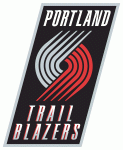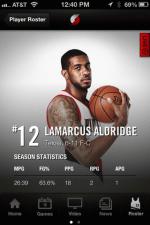
It’s almost 2013 and you’d think that at this point every NBA team would have had its own official mobile app for a few years now, but sadly, that’s not exactly the case. The Portland Trail Blazers, for example, just launched their own official mobile app for iOS in late November. Earlier this month, I sat down with Dan Harbison, the team’s senior director of Interactive Media, to talk about how the Trail Blazers are using mobile to connect with their fans.
Harbison, who joined the Trail Blazers back in 2005, noted how the Trail Blazers have tried to stay current with new technologies. In 2009, for example, the team became the first NBA franchise to stream its games online. With regard to mobile apps, though, the Trail Blazers – and indeed most of the NBA – trailed behind the general trend toward mobile news consumption. That’s not because Harbison and his team didn’t want to do this or didn’t know how to. The problem for the Trail Blazers was simply that the NBA itself wasn’t sure what to do and didn’t provide clear guidance to the teams. The NBA, after all, is somewhat infamous for all of its complicated and territory-based regulations for what games can be streamed where, for example, and it wasn’t clear how those rules would apply to mobile until earlier this year. That didn’t stop various local newspapers, sports channels and others to launch their own apps for various teams, but most of the teams themselves held back from launching their own apps until this year.
Using Mobile To Connect Teams And FansGiven how important mobile has become for fans, though, the teams really need to be on mobile and control their own channel there. For the Trail Blazers, Harbison said, that’s especially important. When he started in 2005, he said, it often felt like Portland didn’t care all that much about its basketball team (which, by the way, is owned by Microsoft co-founder Paul Allen). The Trail Blazers had just come of a devastating season (27-55) and it was clear that the team would have to work hard to win its fans back. For Harbison, that meant doing lots of video production during the 2006/7 season and connecting with people on the then-popular platforms like MySpace. Since then, the Trail Blazers started doing quite a bit better and the community started embracing its home team.
The new app itself really has two goals: provide game day updates and other news around the team – and to continue the Trail Blazers community building program. As Harbison told me, the focus is always on the games, though, and the app actually changes according to the day.
On game days, the app’s homepage – which is usually a calendar of upcoming games – is switched over to focus solely on the current game. Just like Harbison’s earlier efforts, the app is also very video heavy. Most of this content currently comes from the team’s own TrailBlazers.tv efforts – a channel that provides live streaming sports talk and game highlights throughout the week, but Harbison hopes to expand the video section of the app with fan videos and other video content over time. Currently, fans spend a whopping 26 minutes per visit with the app – an engagement time that’s largely driven by this video content and fans using the app as a second screen to follow along with stats during games.
To further improve its fan engagement, the app also lets fans check in to games – both from the arena (where a new WiFi network will soon give fans better Internet access) and from home or anywhere else they may be watching the game. Over time, Harbison hopes to develop this second in the app (and on the web) to provide fans with a place to talk about their team. In addition, of course, the app also provides access live scoreboards, live stats and other team news.
Going Mobile With XamarinOne interesting choice the team made early on in the development process was to use the cross-platform development tool Xamarin to power its efforts. Given that the Trail Blazers are handling most of the development in-house – and with a pretty small team – but still wanted to provide a full native experience on iOS and its forthcoming Android app, the decision to use Xamarin over an HTML5 tool like PhoneGap was made very early on in the process. While there are obviously pros and cons to this choice, the team decided that it wanted a full native experience and access to the full iOS API stack to power some of its features and the user interface, making Xamarin a better choice for this effort.



